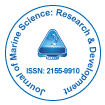Наша группа организует более 3000 глобальных конференций Ежегодные мероприятия в США, Европе и США. Азия при поддержке еще 1000 научных обществ и публикует более 700 Открытого доступа Журналы, в которых представлены более 50 000 выдающихся деятелей, авторитетных учёных, входящих в редколлегии.
Журналы открытого доступа набирают больше читателей и цитируемости
700 журналов и 15 000 000 читателей Каждый журнал получает более 25 000 читателей
Индексировано в
- Индекс источника CAS (CASSI)
- Индекс Коперника
- Google Scholar
- Шерпа Ромео
- Открыть J-ворота
- Генамика ЖурналSeek
- Академические ключи
- ИсследованияБиблия
- Справочник периодических изданий Ульриха
- Библиотека электронных журналов
- РефСик
- Каталог индексирования исследовательских журналов (DRJI)
- Университет Хамдарда
- ЭБСКО, Аризона
- OCLC- WorldCat
- научный руководитель
- Онлайн-каталог SWB
- Виртуальная биологическая библиотека (вифабио)
- Публикации
Полезные ссылки
Журналы открытого доступа
Поделиться этой страницей
Абстрактный
Toxicity Evaluation of Common Drilling Fluid Additives and Applicability Comparison of Marine Toxicity Test Organisms
Jianjun Li, Lujun Yu, Weili Liu, Lei Cai, Yueyue Hu, Xiaoqu Chen, Yong Yi, Suqun Lai, Meili Chen and Ren Huang
The use of drilling additives has rapidly increased with the growing complexity of the drilling process. The environmental hazards associated with drilling waste have drawn a great deal of attention. It is, therefore, necessary to select eco-friendly drilling fluid additives and screen for suitable bioindicators. In the present study, toxicity tests were conducted in accordance with ISO 11348-1 (2007) and the Chinese national standards GB/T 21805-2008 and GB/T 18420.2-2009. Standard marine test organisms were used, including the bioluminescent bacterium Vibrio fischeri, marine diatom Chaetoceros muelleri, cladoceran Moina mongolica, anostracan Artemia salina, whiteleg shrimp Litopenaeus vannamei, and fish Mugilogobius chulae. The results showed that sulfonated asphalt and emulsifier 2 were the most toxic of the 26 drilling fluid additives tested, followed by White oil No. 3, anti-high temperature fluid loss additive, cleaning agent, and emulsifier 1. The order of species sensitivity to drilling fluid component toxicity was M. chulae>M. mongolica>A. salina>L. vannamei>C. muelleri>V. fischeri. A. salina, M. mongolica, and L. vannamei were significantly correlated with each other, as were V. fischeri and C. muelleri, while M. chulae was significantly and positively correlated with C. muelleri and L. vannamei. In conclusion, it was determined that M. chulae is suitable as a standard laboratory-reared organism for drilling waste toxicity assessments, followed by M. mongolica and C. muelleri. In view of their comparatively high toxicities, both sulfonated asphalt and emulsifier 2 merit further investigation and should be replaced by more ecologically benign products.
Журналы по темам
- Биохимия
- Ветеринары
- Генетика и молекулярная биология
- Геология и науки о Земле
- Еда и питание
- Иммунология и микробиология
- Инженерное дело
- Клинические науки
- Материаловедение
- медицинские науки
- Науки об окружающей среде
- Общая наука
- Сельское хозяйство и аквакультура
- Социальные и политические науки
- Уход и здравоохранение
- Фармацевтические науки
- Физика
- Химия

 English
English  Spanish
Spanish  Chinese
Chinese  German
German  French
French  Japanese
Japanese  Portuguese
Portuguese  Hindi
Hindi